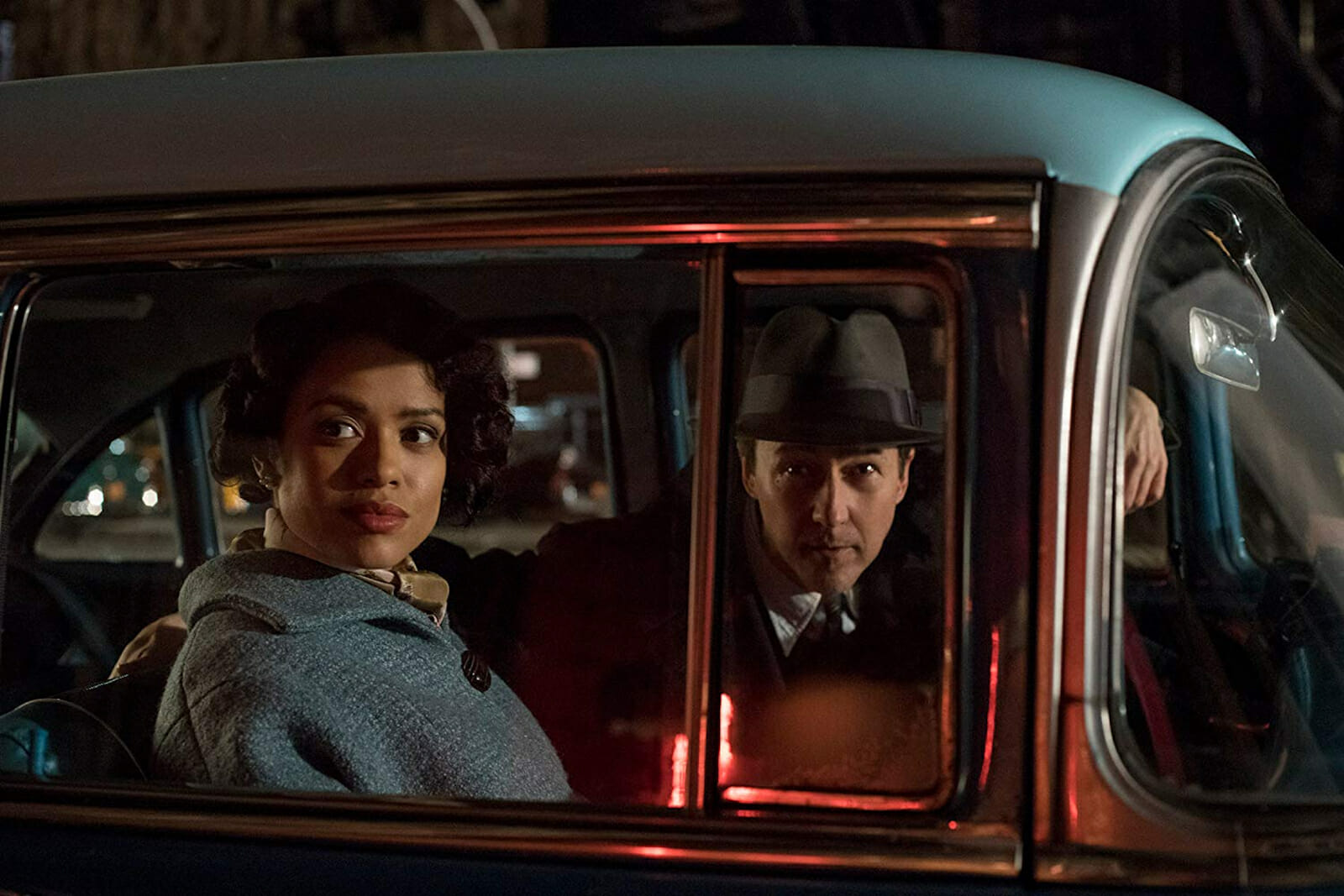
‘Motherless Brooklyn’ Review
Film noir is probably my favorite genre after suspense thrillers. Classics like The Maltese Falcon, Kiss Me Deadly, In a Lonely Place, Laura, and Double Indemnity draw me in with style, mood, and character flaws. Tough guys and clever women combined with secrets, empty clues, and false bunny trails can mesmerize me for hours. Evidently Edward Norton shares my affection for this genre, as he purposefully shifted the time frame of Jonathan Lethem’s novel Motherless Brooklyn from 1999 to 1957 for the big-screen adaptation.
Norton dons 4 hats for his passion project that’s been brewing for almost a decade. He writes, directs (his second time at the helm), produces, and stars as Lionel Essog, the assistant to Private Investigator Frank Minna (played by Bruce Willis). Lionel, often referred to as “Brooklyn” or “Freak Show” suffers from Tourette’s syndrome, causing him many uncomfortable moments of awkward verbal outbursts and physical tics, while also blessing him with a photographic memory and world-class attention to detail. The concern here was that Norton the actor would turn the character into a gumshoe “Rain Man,” but that never happens, as his affliction rarely overshadows a scene or the story.
One of the first things we notice is that the film looks beautiful. The costumes (Amy Roth), set design (Beth Mickle, Kara Zeigon) and cinematography (2-time Oscar nominee Dick Pope) are all spot on and top-notch. The classic cars are especially impressive, despite my pet peeve of each being perfectly washed and waxed in every scene. Daniel Pemberton’s retro score perfectly captures the neo-noir moments.
This era in New York included jazz clubs, corrupt politicians and power struggles for profiteering from the growth. Norton’s film delivers The King’s Rooster jazz club with the great Michael Kenneth Williams as the featured trumpet player…he looks like a natural on stage in the smoky club. We also, of course, have plenty of big-time corruption and scheming. The main culprit being City Planner Moses Randolph, the epitome of corruption and racism. Alec Baldwin could play this role in his sleep, and he performs admirably in the not-so-subtle riff on the real-life Robert Moses.
The film’s opening sequence leaves Lionel committed to solving the murder of Minna, his mentor, and (only) friend. His co-workers played by Dallas Roberts, Bobby Cannavale, and Ethan Suplee come in and out of the story, contributing very little. Things are most interesting when Lionel crosses paths with brilliant city engineer Paul (Willem Dafoe in a less salty role than in The Lighthouse) and activist Laura Rose (Gugu Mbatha-Raw), in a role that would have benefitted from some beefing up in the script. Other supporting roles are filled by Leslie Mann, Fisher Stevens, Cherry Jones, and Josh Pais.
The story follows a path not dissimilar to the all-time classic Chinatown, and it’s in that comparison where the weaknesses in Norton’s film are most evident. The dialogue never quite clicks like it should, and at times it comes across like the actors are simply playing dress-up 1950’s-style, rather than actually experiencing the struggles of the story. Everything just seems too ‘clean’ for this genre, even the moments of violence. It’s the details that make the difference in this genre, and even Norton’s voiceover is mishandled. As narrator, his voice is low and gruff which is customary for noir; however, while in character, the voice is high-pitched and sporadic. Both voices are as they should be, but since it’s the same character, the contrast takes us out of the moment when the narrator chimes in. The Tourette’s Association of America gave its stamp of approval to the film. We do walk away with sage advice: “Never lie to a woman who is smarter than you.”

